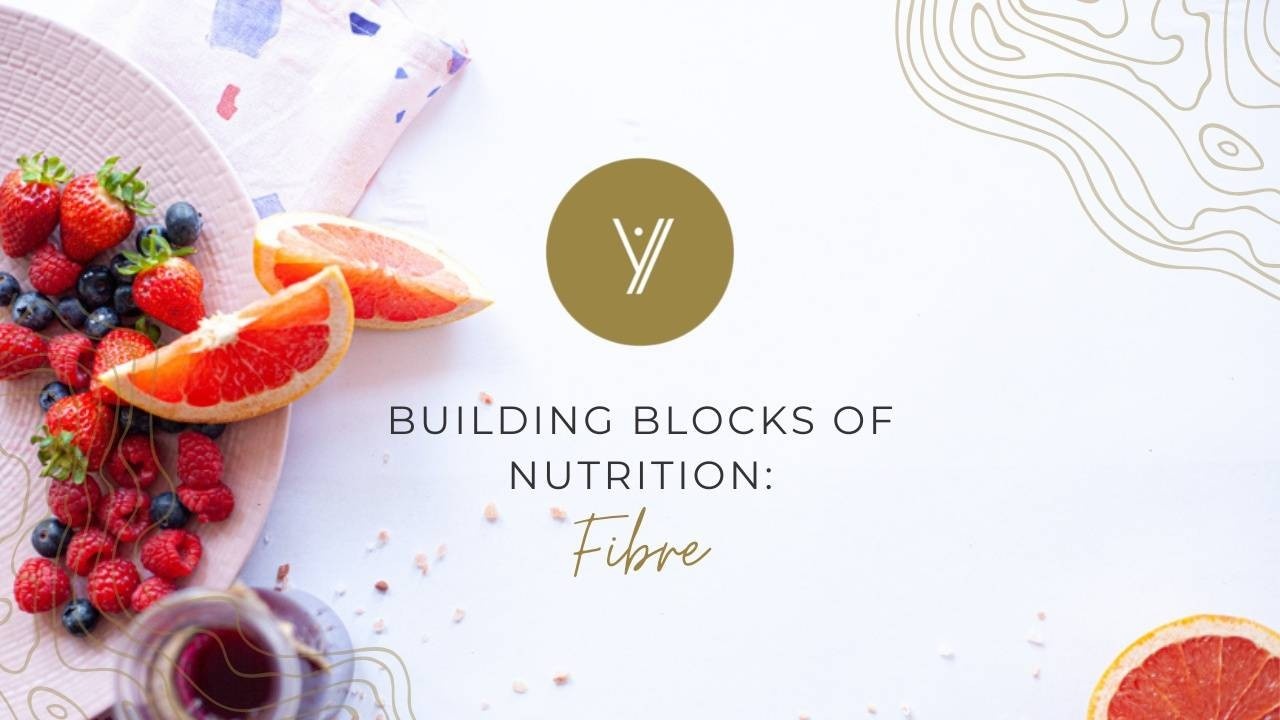Building Blocks of Nutrition: Fibre
Aug 19, 2021
Dietary fibre includes the parts of plant foods your body can’t digest or absorb. Unlike other food components, such as fats, proteins or carbohydrates — which your body breaks down and absorbs — fibre is not digested by your body. Instead, it passes relatively intact through your stomach, small intestine, colon and out of your body. Taking with it toxins, waste, fat, excess hormones and cholesterol particles out of the gut.
Some functions of Fibre:
- Needed for efficient digestion
- Helps maintain bowel health
- Keeps your heart healthy
- Regulates the amount of glucose in your blood – stabilises blood sugar
- Keeps energy levels up
- Helps concentration
- Keeps skin healthy
Types of fibre
-
Soluble fibre
-
- This type of fibre dissolves in water to form a gel-like substance which makes you feel full longer.
- is one reason why fibre may help with weight control.
- It slows digestion and the emptying of the stomach.
- which can regulate the rate at which sugars are absorbed by the blood through the intestines.
- It can be fermented by bacteria in the digestive system.
- which has shown to improve digestion and the function of the immune system.
- This type of fibre dissolves in water to form a gel-like substance which makes you feel full longer.
Foods that are high in soluble fibre include apples, citrus fruits, dark green veggies (broccoli, spinach, and brussel sprouts), beans, cucumbers, blueberries, oats, peas, barley, chia seeds and psyllium.
-
Insoluble fibre.
-
- Is not altered in any way in the gut and its main function is to keep things moving along.
- Healthy and regular elimination of waste.
- This promotes pH balance in the body and protects the colon from harmful microbes that can alter the DNA and cause colorectal cancers.
Insoluble fibre can be found in the skins of many fruits and vegetables, dark green leafy vegetables, green beans, celery, cauliflower, brown rice and seeds.
Some foods, like nuts and carrots, are good sources of both types of fibre.
How Can I Tell If I’m Getting Enough Fibre?
When food companies process foods like grains, fruits and veggies they do so at the cost of much of the fibre. The loss of this essential nutrient has many harmful effects. The first, and most uncomfortable, sign of a low-fibre diet is constipation. Since insoluble fibre’s main job is to move food and waste through our digestive system, it makes sense that the lack of it would cause slowing or stopping of elimination.
High-fibre foods are essential for your health, but adding too much fibre too quickly can promote intestinal gas, abdominal bloating and cramping.
- Increase fibre in your diet gradually over a period of a few weeks. This allows the natural bacteria in your digestive system to adjust to the change.
- Drink plenty of water. Fibre works best when it absorbs water, making your stool soft and bulky.
Tips to eat more fibre:
It’s recommended that adults get at least 25–30 grams of fibre every day. Have a look at our meal plan.
- Swap out meat for beans a couple of times a week.
- Don’t have pre-made fruit juices — instead, eat whole pieces of fruit.
- The same goes for vegetables in most cases. Eating the whole thing (including the skin too if it’s edible) gives you the most fibre.
- Make a Smoothie, this includes all of the fruit and vegetable pulp, seeds and skin where the fibre is stored.
- Always skip products made with refined flour or grains.
- Snack on raw vegetables, hummus or whole pieces of fruit throughout the day instead of having processed foods fortified with fibre.
- Eat a large salad once a day, and add plenty of veggies, beans, legumes, nuts and seeds.
- Add flaxseeds to the meal.
- Add chia seeds to meals
Fibre regulates blood sugar levels and releases energy over a longer period, which is better for concentration, athletic performance and overall wellbeing.
